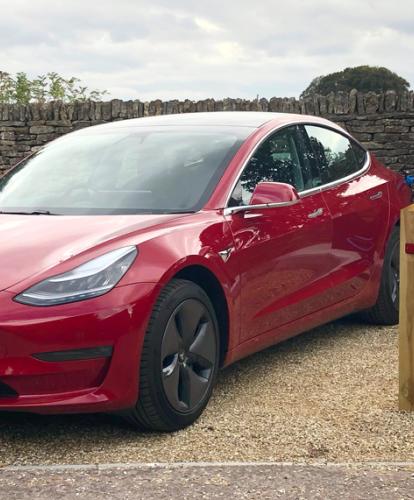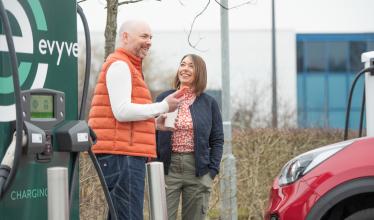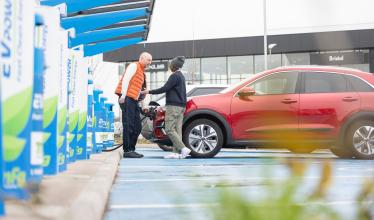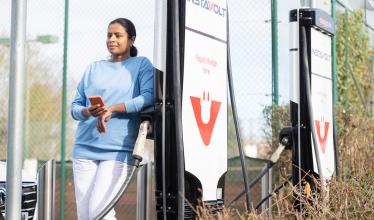It’s been a great year for all things electric, including EV charging, with Zapmap seeing records tumble throughout the last 12 months. At a time when new electric cars are launched with increasing regularity, it’s good to see that the charging infrastructure and market is more than keeping pace.
Below, we share a few highlights from our year, having pored over the data, statistics, and Zapmap’s own contributions to the EV charging market.
Many, many new charge points
There are now almost 17,000 public EV charging devices in total on Zapmap, providing more than 29,000 connectors for EV drivers across the UK sited at over 10,500 locations.
The UK’s charging point network is now significant with continued growth forecast. The number of devices for example is 52% up on 2018, and the number of new public EV charge point locations added has grown 57% compared to last year.

Key trends within these statistics are for charging speeds and access. Significant increases in ultra-rapid charge points have come about in 2019, with more than 800 connectors available to drivers. This is up from the 300 or so at the turn of the year. Although some of the increase came about because of Tesla’s improvement of its network, a large number come from open access devices – those that any EV can use.
One regular bug-bear of those looking at public EV charging having never used it is the question of access. Regular EV drivers know that there are a number of ways to access various charge points, but you get to find preferred networks, and rely on ad-hoc access the rest of the time. One big development – both for regular users and complete newcomers – is contactless bank card access; and this has leapt forward in 2019.
Having had only 300 contactless-enabled devices available at the start of 2019, come the end of the year, that figure has more than tripled. Almost 1,000 contactless-bank card accessible EV charge points have been installed, and plenty more are on their way.
A year of new networks
While most EV aficionados know that the largest public EV charging network in terms of devices is BP Chargemaster’s Polar with more than 2,200 units, the second on the list might come as a surprise – as of the end of 2019 it’s ubitricity. The on-street lamp-post charging specialists have just under 2,000 devices on Zapmap, with most currently installed in Greater London.
It’s not just Polar and ubitricity that have been busy putting points in the ground however. Significant expansion plans from the likes of Pod Point, InstaVolt, Engenie, GeniePoint, and ChargePlace Scotland have played a large part in the increased numbers of chargers available, as highlighted at the start of the piece.

New networks have entered the market in 2019 as well, further increasing the number of charge points on Zapmap. Names such as Ionity, Fastned, InCharge, VendElectric, and E.On Drive weren’t on our filters list (literally!) this time last year, and they are far from the only new networks added in that time.
While public rapid and ultra-rapid chargers are great for covering long distances, many EV drivers just want the convenience of charging at or near home, but may not have access to off-street parking. On-street residential EV charging is the solution to this particular issue, and looking at the chart below, it’s clear that this area has grown significantly in 2019.

Zapmap’s 2019 and beyond!
At Zapmap, we’re proud that more than 100,000 EV drivers use our maps and tools each month; be they map, app, calculators, guides, or our smart Route Planner. Having crunched some numbers on the latter, it’s clear that plenty of you are more inclined than ever to drive longer distances on electric power.
In 2019, Zapmap’s Route Planner users plotted out more than 42,000 routes, with a total combined distance exceeding 54 million miles – that’s over 2,100 times around the earth! Naturally, we can’t vouch that all of these trips have been carried out, but what is clear however is that people are driving further than ever before in electric vehicles.
This is supported by data from our annual EV Charging Survey which revealed an increase in charging duration on rapid units over the four years to 2019. The increase in charging time on rapids – which is highly significant, representing an 146% increase from a low base in 2016 (>40 minutes) – is likely to be due to the higher battery capacities used by newer EV models and also to the increasing use of EVs for longer journeys.
Not only has the Route Planner been proving popular, but a number of other features have come along in 2019. The most recent of these is the launch of Zapmap on Google Assistant, which allows the use of voice commands to use Zapmap to find and navigate to EV charge points, either nearby or on a route.

There have also been numerous improvements to the app throughout the year, with a major new release planned for early 2020 (watch this space!). We have also continued to sign up new dynamic (live) data partners to improve the accuracy of our information. Zapmap has dynamic data for more than 60% of communicable devices, up from last year’s figure of 44%.
We’ve been working flat-out on Zap-Pay too, and this will come to market early in 2020. Again, there will be plenty of announcements when it launches, but keep an eye out for this exciting development, allowing users to access and pay for EV chargers on participating networks using the Zapmap app.
2019 also saw Next Green Car, the company which owns Zapmap, secure investment from Good Energy, which has enabled Zapmap to expand the team to work on and so accelerate product development. With a 15-strong team now in place, expect to see developments arrive faster than ever before from Zapmap. We look forward to making a series of key announcements in 2020.
Until then, the Zapmap team wish you a great start to the New Year!
Notes: All of the above figures are from the Zapmap’s database. Zapmap terminology: a connector is the equivalent of a filler nozzle, a charging device is the same in concept as a petrol pump, and a location is a charging site. There can be one or more connectors on one device and multiple devices at a location.



